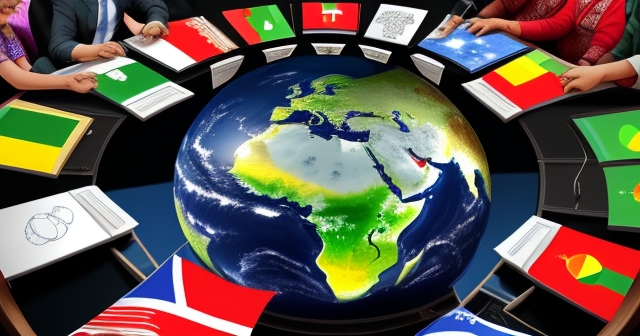Welcome to our deep dive into the world of BRICS. Perhaps you’ve heard the acronym mentioned in financial news or seen it pop up in discussions about global power shifts. It’s a term that has evolved significantly since its inception, representing a fascinating group of emerging economies with ambitious goals.
The BRICS grouping comprises rapidly developing nations that are reshaping global economic landscapes. Here are some key characteristics of BRICS:
- Collective representation of major emerging economies.
- Focus on shared interests and global cooperation.
- Aim for reform in international financial institutions.
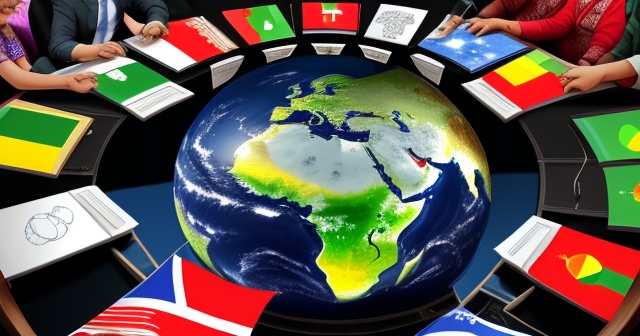
Let’s start at the beginning. The term “BRIC” wasn’t initially conceived by politicians or diplomats; it was coined by a financial economist. In 2001, Jim O’Neill, then chief economist at Goldman Sachs, used the acronym to highlight the rapid economic growth and investment potential of four major emerging markets: Brazil, Russia, India, and China.
Think of it like identifying promising areas on a global map for economic explorers. O’Neill predicted that these countries, with their large populations, growing middle classes, and increasing integration into the global economy, would become significant economic forces, potentially surpassing many developed economies in the coming decades.
| Country | Population (Approx.) | GDP (USD Trillions) |
|---|---|---|
| Brazil | 213 million | 1.44 |
| Russia | 143 million | 1.78 |
| India | 1.39 billion | 2.94 |
| China | 1.41 billion | 17.73 |
However, BRIC quickly moved beyond a mere investment concept. These nations recognized shared interests and the potential for greater influence on the global stage through coordinated action. Their economies were growing, their demographic weight was undeniable, and they felt their voices were underrepresented in international institutions shaped largely by Western powers after World War II.
So, what began as an analytical tool for investors evolved into a platform for diplomatic coordination. The first formal meeting of the foreign ministers of the original four BRIC countries took place in 2006. This laid the groundwork for the first leaders’ summit in Yekaterinburg, Russia, in 2009. It was at this point that BRIC transformed from a theoretical grouping into a practical political and economic bloc, driven by a shared desire to reshape the global order.
This evolution tells us something crucial about how economic potential can translate into political ambition. The very act of being grouped together under a single, catchy acronym seemed to give these nations a collective identity and impetus to cooperate. It’s a powerful illustration of how economic analysis can inadvertently contribute to geopolitical realignments.

The initial four BRIC nations quickly found common ground. They shared concerns about the dominance of developed economies in global financial and political institutions, such as the International Monetary Fund (IMF), the World Bank, and the United Nations Security Council.
| Institution | Key Functions |
|---|---|
| IMF | Monitors economic stability and provides loans |
| World Bank | Funds development projects and initiatives |
| UN Security Council | Maintains international peace and security |
Their early objectives were clear: they wanted a louder voice in global economic governance and a more equitable international order. They aimed to coordinate their diplomatic positions on key global issues, advocate for reforms in multilateral institutions, and boost economic cooperation among themselves.
The bloc became “BRICS” in 2010 with the formal invitation and subsequent joining of South Africa. Why South Africa? While its economy was smaller than the original four, South Africa’s inclusion added significant geographical representation from the African continent, enhancing the group’s claim to speak for the Global South and providing a gateway to African markets and diplomacy.
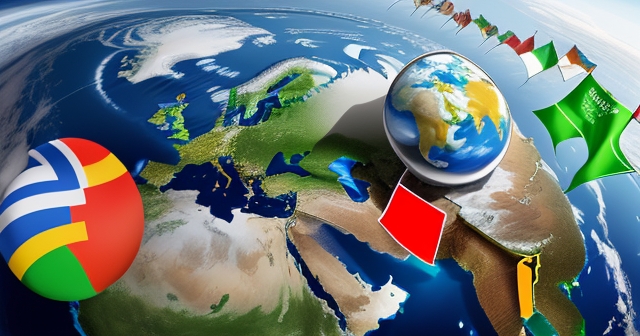
South Africa’s membership solidified BRICS’s identity not just as an economic grouping, but as a coalition seeking to represent the interests of emerging markets and developing countries more broadly. It underscored the bloc’s aspiration to be a counterweight not only economically but also politically and geographically to established Western alliances like the G7.
This period saw BRICS holding annual summits, rotating the presidency among members. These summits became forums for discussing global economic challenges, coordinating development policies, and exploring ways to build alternative financial mechanisms outside the traditional Western-dominated system. It was during these early years that the seeds of key initiatives, which we’ll discuss shortly, were sown.
The transition from BRIC to BRICS was more than just adding a letter; it represented a tangible step towards greater inclusivity and a broader claim to represent diverse emerging economies across different continents. It set the stage for the even more significant expansion we’ve witnessed recently.
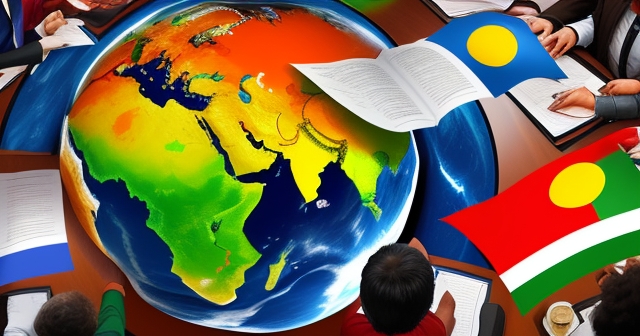
Fast forward to the 15th BRICS summit held in Johannesburg, South Africa, in August 2023. This summit marked a pivotal moment in the group’s history: a significant expansion of its membership. The decision was made to invite Iran, Egypt, Ethiopia, Saudi Arabia, and the United Arab Emirates (UAE) to become full members effective January 1, 2024.
This was a major development that fundamentally altered the composition and potential influence of the bloc. The inclusion of these countries brought in new dynamics, significantly increasing the group’s economic weight, demographic scale, and geopolitical leverage.
- Almost half of the world’s population.
- More than a quarter, and potentially closer to one-third, of the global GDP (estimates vary, often ranging from 28% to 31.5% based on purchasing power parity).
- A substantial share of global crude oil production, particularly with the addition of major energy producers like Saudi Arabia, UAE, and Iran. This figure is estimated to be around 44% of global crude oil output.
| Metric | Percentage Representation |
|---|---|
| Global Population | ~50% |
| Global GDP | ~28% – 31.5% |
| Global Crude Oil Production | ~44% |
The expanded BRICS now plays a crucial role in global economic dynamics. Consider the sheer scale of this. Nearly half the people on the planet live in a BRICS country. This gives the bloc significant demographic power, impacting everything from global labor markets to consumer trends. Their share of the global economy, already substantial, grows even larger, challenging the long-held dominance of Western economies.
Furthermore, the inclusion of key oil-producing nations gives the expanded BRICS a direct influence over global energy markets, a factor that has immediate geopolitical and economic ramifications. This isn’t just about trade volume; it’s about controlling essential global resources.
While six countries were initially invited, not all joined exactly as planned. Argentina, under the newly elected President Javier Milei, declined the invitation in late 2023, opting to maintain closer ties with the West. Saudi Arabia reportedly accepted but its official joining process has seen some delays, though it participates in meetings.
Looking ahead, Indonesia was announced by Brazil as expected to join as a full member in 2025, further extending the bloc’s reach into Southeast Asia.
This expansion wasn’t just about adding members; it was a strategic move to increase the bloc’s leverage and diversify its representation across different regions – North Africa, the Middle East, and Southeast Asia. It signifies a growing momentum among non-Western nations to coordinate and potentially challenge the existing global power structures.
At its core, the BRICS bloc is fundamentally about shifting the global balance of power. Its members, while diverse in their political systems and national interests, share a common goal: to create a multipolar world order where the dominance of the United States and its Western allies is diminished, and where emerging economies have a stronger say.
This isn’t necessarily about confrontation, although tensions certainly exist. It’s more about seeking a redistribution of influence. Think of it like updating the board of a global company to reflect the changing ownership structure. BRICS members argue that the current international institutions, created largely after World War II, no longer accurately represent the economic and demographic realities of the 21st century.
Specifically, they challenge the structure and voting power within institutions like the IMF and the World Bank, where Western countries, particularly the United States, hold significant sway. BRICS advocates for reforms that would give greater voting rights and representation to developing nations, arguing that these institutions should better reflect the global economy as it is today, not as it was decades ago.
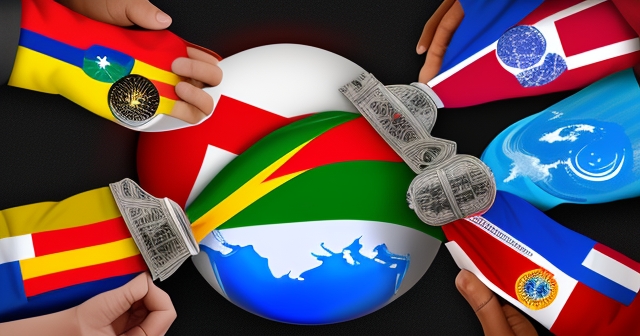
They also seek reforms in the United Nations Security Council, where five permanent members (including Russia and China from the BRICS original group, but notably excluding Brazil, India, and South Africa) hold veto power. BRICS members like India and Brazil have long aspired to permanent seats and greater influence in global security matters.
Beyond institutional reform, BRICS serves as a platform for diplomatic coordination on a wide range of global issues. Members often discuss and attempt to align their positions on matters ranging from climate change to global health to geopolitical conflicts. While perfect alignment is rare due to differing national interests, the platform provides a space for dialogue and potential joint action that bypasses traditional Western-centric forums.
The bloc also increasingly positions itself as a voice for the Global South. By including countries from Africa, Asia, and Latin America, BRICS aims to amplify the concerns and aspirations of developing nations that often feel marginalized in global decision-making processes. This advocacy for the Global South is a key element of their strategy to build broader international support and legitimacy for their vision of a multipolar world.
In essence, BRICS is a collective effort to reshape the rules and structures of the international system. It’s a complex undertaking, fraught with challenges, but the ambition is clear: to build a global order that is less dictated by a single power center and more reflective of the rising influence of emerging economies.
Beyond political aspirations and institutional reform, BRICS has also taken concrete steps to build alternative economic structures. The most significant of these is the establishment of the New Development Bank (NDB).
Established in 2014 and operationalized in 2015, the NDB is often seen as a BRICS alternative to the World Bank and the IMF. Its primary purpose is to mobilize resources for infrastructure and sustainable development projects in BRICS countries and other emerging economies and developing countries. Headquartered in Shanghai, the bank aims to provide financing that complements, or perhaps eventually competes with, traditional development finance institutions.
Unlike the World Bank, where voting power is largely based on economic contributions and controlled by developed nations, the NDB’s founding members initially shared equal voting rights, reflecting the BRICS principle of equality among members. The bank has since expanded its membership beyond the BRICS nations, inviting countries like Bangladesh, Uruguay, Egypt, and the UAE to join, further increasing its global footprint and capital base.
The NDB represents a tangible output of BRICS cooperation, a vehicle for directing capital towards development priorities as defined by emerging economies themselves. It’s a practical example of building the infrastructure for a multipolar financial system.
Another significant area of focus, and one that garners considerable international attention, is the discussion around reducing reliance on the U.S. dollar in international trade and finance. This concept, often referred to as de-dollarization, is a key aspiration for several BRICS members, particularly Russia and China.
Why de-dollarization? The dominance of the U.S. dollar in global trade, finance, and as the primary reserve currency gives the United States significant economic and political leverage. It allows the U.S. to impose sanctions effectively and influences global monetary policy. BRICS nations, seeking greater autonomy and frustrated by the potential weaponization of the dollar, are exploring alternatives.
These alternatives include:
- Increasing bilateral trade settled in local currencies between BRICS members.
- Developing alternative payment systems that bypass the SWIFT network, which is largely controlled by Western banks. Discussions around systems like BRICS pay are part of this effort.
- Potentially creating a new common BRICS currency, although this is a highly complex and long-term prospect facing numerous political and economic hurdles.
- Utilizing the BRICS Contingent Reserve Arrangement (CRA), a mechanism to provide liquidity support to members facing balance of payments pressures, acting as a mini-IMF for the bloc.
While a common BRICS currency remains a distant possibility due to the vast economic differences and lack of monetary policy coordination among members, the push for settling trade in local currencies and developing alternative payment rails is gaining traction. This movement, fueled by geopolitical developments such as sanctions against Russia, highlights BRICS’s practical efforts to build an economic system less dependent on the existing Western architecture.
Despite their shared aspirations to challenge the Western-led order and promote a multipolar world, the BRICS bloc is far from a monolithic entity. It is a diverse group of nations with differing political systems, economic structures, historical experiences, and often, competing national interests.
This diversity is a source of strength, giving the bloc broad representation, but it also creates significant internal divisions and challenges. For example, while Russia and China share a strong anti-Western stance, particularly concerning the United States, countries like India and Brazil have historically maintained closer ties with Western nations and often seek a more balanced foreign policy.
The differing responses among BRICS members to Russia’s invasion of Ukraine highlighted these divisions. While Russia and China offered diplomatic support or neutrality, India, Brazil, and South Africa adopted more nuanced positions, expressing concerns about the conflict and its impact on global stability while largely avoiding outright condemnation of Moscow. These differing stances complicate efforts to present a unified BRICS front on major geopolitical issues.
| Country | Response to Ukraine Conflict |
|---|---|
| Russia | Supportive |
| China | Neutral |
| India | Nuanced Position |
| Brazil | Nuanced Position |
Another challenge stems from the bloc’s informal nature. BRICS lacks a formal charter, a permanent secretariat, or common funds (other than the NDB and CRA). Decision-making is based on consensus, which can be time-consuming and difficult to achieve, especially with a larger and more diverse membership. While informality allows for flexibility, it can also hinder decisive and rapid collective action.
The rotating presidency, while promoting equality, means that the bloc’s agenda and priorities can shift annually depending on which country holds the helm. For instance, Russia’s 2024 presidency is focused on strengthening financial cooperation and expanding the use of national currencies, while Brazil’s announced priorities for the 2025 presidency include global governance reform and strengthening cooperation among Global South countries.
Furthermore, the expansion, while increasing clout, also introduces new complexities. Integrating five (potentially six or more) new members with their own unique interests, geopolitical alignments, and domestic priorities requires significant coordination and negotiation. It could potentially dilute the group’s focus or exacerbate existing tensions.
Managing these internal dynamics – balancing diverse interests, achieving consensus, and integrating new members – is arguably the greatest challenge facing BRICS as it seeks to grow its influence and reshape the global order. Can the bloc maintain unity and effectiveness despite its inherent heterogeneity?
We’ve already touched upon the significant economic weight of the expanded BRICS bloc in terms of GDP and population. But let’s delve a little deeper into what this economic muscle means in practical terms for the global economy and financial markets.
Firstly, the sheer size of the combined economies represents a massive market for goods and services. As these economies continue to develop, their consumption power grows, offering significant opportunities for global trade and investment, both internally within the bloc and externally.
| Factor | Impact |
|---|---|
| Market Size | Increased trade opportunities |
| Resource Control | Leverage in energy markets |
| Foreign Reserves | Financial firepower |
The concentration of key resource producers, particularly in energy, within the expanded BRICS is also a critical factor. As mentioned, the group controls a significant portion of global crude oil production. This gives them leverage in energy markets and influences global energy security. Beyond oil, BRICS countries are also major producers and consumers of various commodities, from minerals to agricultural products, impacting global supply chains and prices.
Furthermore, the BRICS nations collectively hold substantial foreign exchange reserves. While China holds the largest share, the combined reserves give the bloc potential financial firepower, although these reserves are managed individually by each country’s central bank.
The rise of these economies also impacts global financial flows. As their markets mature, they attract increasing amounts of foreign direct investment (FDI) and portfolio investment. Concurrently, BRICS countries are becoming significant global investors themselves, through their sovereign wealth funds, state-owned enterprises, and increasingly, private companies.
The push for de-dollarization, while challenging, is a direct consequence of this growing economic power. As BRICS countries conduct more trade among themselves and with other partners in their local currencies, it gradually erodes the need for the U.S. dollar as an intermediary. This could, over time, impact demand for the dollar and influence global currency markets.
However, it’s important to note that the economic integration within BRICS is still relatively limited compared to blocs like the European Union. Trade flows among BRICS members are substantial but still represent a smaller portion of their total trade compared to their trade with developed economies. This highlights a potential area for future growth and focus for the bloc.
Understanding the economic scale and interdependencies within the expanded BRICS is crucial for anyone involved in global markets. It’s not just a political grouping; it’s an economic force whose collective decisions and trajectories have tangible impacts worldwide.
The rise and expansion of BRICS have profound geopolitical implications, contributing to a reshaping of the global political landscape. The bloc acts as a significant counterweight to established Western alliances and forums, offering an alternative platform for international engagement and cooperation.
One of the most immediate impacts is on the dynamics of international relations. As BRICS gains prominence and membership, it provides a platform for non-Western powers to coordinate policies, voice shared grievances about the existing global order, and challenge positions taken by the G7 or NATO. This can lead to increased polarization on the international stage, particularly on issues where BRICS members’ interests diverge sharply from those of Western nations.
The inclusion of countries from critical geopolitical regions, such as the Middle East (Saudi Arabia, UAE, Iran) and Northeast Africa (Egypt, Ethiopia), brings the bloc closer to major global flashpoints and resource hubs. This increases BRICS’s potential influence in these regions but also exposes it to the complex conflicts and rivalries inherent there. For example, managing the relationship between Saudi Arabia and Iran within the same bloc will require careful diplomacy.
BRICS also plays a role in the broader competition between major powers. China and Russia, in particular, view BRICS as a key vehicle for building a multipolar world that reduces U.S. hegemony. For other members like India and Brazil, BRICS offers a means to enhance their own global standing and pursue strategic autonomy, allowing them to engage with various power blocs without being tied exclusively to one.
The bloc’s advocacy for the Global South resonates with many developing countries who are seeking greater representation and a less conditional form of international cooperation and development finance compared to what is often offered by Western institutions. This positions BRICS as an attractive partner for countries looking to diversify their international relationships.
However, the geopolitical ambitions of BRICS face significant challenges. Western nations are closely watching the bloc’s growth and are likely to increase their diplomatic and economic engagement with BRICS members to counter its influence or highlight internal divisions. Furthermore, the members’ diverse national interests mean that achieving a unified stance on all international issues remains difficult. For instance, while all members advocate for multilateralism, their interpretations and priorities may differ.
The geopolitical trajectory of BRICS will depend on its ability to manage internal tensions, present a relatively united front on key issues, and offer concrete alternatives to existing global structures that are genuinely attractive to a wider range of countries.
With the recent expansion, questions naturally arise about how BRICS decides who gets to join and what the future of its membership might look like. While there isn’t a rigid, publicly available treaty outlining precise criteria, certain principles and considerations guide the process based on past invitations and statements by member countries.
- Geographic Balance: Ensuring representation from different continents and regions to bolster the bloc’s claim as a voice for the Global South.
- Economic Significance: Considering the potential member’s contribution to the global economy, market size, and growth potential.
- Good Diplomatic Relations: Potential members generally need to have positive and stable diplomatic relations with all existing BRICS members.
- Adherence to UN Security Council Sanctions: This is a stated criterion, although the interpretation can vary.
- UN Membership and Support for Multilateralism: Candidates must demonstrate a commitment to multilateral cooperation.
- Commitment to Global Governance Reform: Potential members should align with BRICS’s core objectives.
The decision to expand in 2023 was reached through consensus among the existing five members, illustrating the importance of mutual agreement in the bloc’s operations. The invitation process itself is complex, involving high-level discussions and agreements among leaders.
Beyond full membership, BRICS also engages with a wider circle of countries through various formats:
- Partner Countries: A category introduced for closer engagement with interested countries.
- Outreach: Allows regional countries to participate in summit dialogues.
- BRICS Plus: Invites additional countries to specific summit sessions.
These varying levels of engagement demonstrate BRICS’s desire to build a broader coalition of countries interested in reforming the global order. The future of expansion will likely depend on the bloc’s capacity to integrate new members successfully and the geopolitical dynamics at play.
One of the key operational features of BRICS is its annually rotating presidency. Each year, a different member country takes on the responsibility of chairing all BRICS meetings and events, from ministerial gatherings to the leaders’ summit. This includes setting the theme and priorities for the year.
This system is designed to ensure equality among the founding members and give each country an opportunity to steer the bloc’s agenda according to its national interests and priorities. However, it also means that the focus and tone of BRICS activities can shift from year to year.
For example, Russia held the BRICS presidency in 2024. Given the current geopolitical context, Russia’s priorities for the year have focused on strengthening BRICS’s role in the international financial system, expanding the use of national currencies in trade and investment, and boosting cooperation between banks and financial authorities within the bloc. This aligns with Russia’s broader strategy against the U.S. dollar.
Looking ahead, Brazil will hold the BRICS presidency in 2025, with an emphasis on global governance reform and cooperation on development issues.
A consistent theme in BRICS’s rhetoric and actions is its positioning as a champion of the Global South. This positioning helps in aligning the interests of developing nations and amplifying their voices at the global level.
As we look at the expanded BRICS bloc, it’s clear that it stands at a crossroads, facing both significant opportunities and formidable challenges. Its trajectory in the coming years will heavily influence the future shape of the global order.
The primary opportunity lies in the enhanced collective power brought by the expansion. The increased economic weight, demographic size, and control over critical resources like energy give the expanded BRICS greater leverage in international negotiations.
However, the challenges are significant as well. Internal divisions may disrupt unity and compromise decision-making processes amidst diverse interests. Can the bloc navigate these complexities effectively?
brics definitionFAQ
Q:What is BRICS?
A:BRICS refers to an association of five major emerging economies: Brazil, Russia, India, China, and South Africa.
Q:What are the main objectives of BRICS?
A:BRICS aims to reform international financial institutions, promote economic cooperation, and enhance representation for emerging markets.
Q:How does BRICS influence global politics?
A:BRICS serves as a counterbalance to Western influence, advocating for a multipolar world order and greater representation for developing countries.
